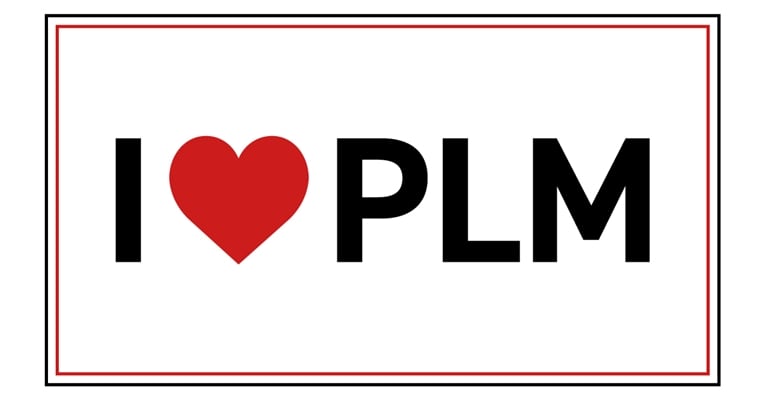I was listening to a customer the other day who complained that he was so frustrated with his old PLM that he basically “wanted to throw it all out and build a functional system himself.” I had to laugh at the number of times I’ve heard that in the last 20 years. In fact, Aras put out a wildly popular sticker saying, “I love PLM.” Its popularity did not stem from an actual affinity for PLM systems in general, but because of the irony that most PLM systems are just so frustrating to work with. Keeping one on my laptop has led to some interesting airport conversations over the years!
So, let’s dig into why people are typically frustrated with PLM.
It dictates the way you work.
Sure, PLM fundamentally centralizes and organizes data into a unified structure. If you are a design engineer conducting a thought experiment and designing something in a vacuum, you certainly don’t need PLM.
On the other hand, for product manufacturing organizations, requirements guide design, design feeds data to purchasing and manufacturing, which feeds information to service, and quality closes the loop back to design and requirements. Without a unified system that tracks part interdependencies, “where used,” and data relationships change management become simply impossible to keep up with.
While some data governance is necessary, the frustration really hits home when companies try to use software strictly out of the box. All companies have different processes and for many good reasons. Without customizing your PLM to suit the way you work, you end up working for your PLM, rather than your PLM working for you.
Aras’ industrial low-code platform makes it undeniably the easiest major PLM system to customize. In fact, many Aras customers build all sorts of applications using Aras platform services to suit their unique needs. Check out Build With Aras for more on that. What can you build with your PLM?
It’s SO expensive.
 Of course, cost varies, and the sky is the limit when investing in product development software tools. Costs will naturally vary when looking at full PLM vs. design engineering centric PDM or even simple BOM management tools. What can be even more costly are mountains of scrap, ordering the wrong versions of parts, project delays, part failures, wiring harnesses that aren’t compatible with the electronic components, recalls due to software incompatibilities, etc. So, while IT systems may be costly, this group of issues is not only costly, but can also lead to people being fired due to recalls, scrap, or generally poor documentation.
Of course, cost varies, and the sky is the limit when investing in product development software tools. Costs will naturally vary when looking at full PLM vs. design engineering centric PDM or even simple BOM management tools. What can be even more costly are mountains of scrap, ordering the wrong versions of parts, project delays, part failures, wiring harnesses that aren’t compatible with the electronic components, recalls due to software incompatibilities, etc. So, while IT systems may be costly, this group of issues is not only costly, but can also lead to people being fired due to recalls, scrap, or generally poor documentation.
The real problem lies with perpetual inability to clearly estimate cost over time once you consider add-ons, various other licenses, and the discounting that is common in the first year or two. In fact, with many PLM vendors, the quoting process alone can take weeks, or even months, and by the end it still isn’t clear that you have the necessary ingredients to finish the job without some additional obscure middleware.
Aras’ pricing is simple. In fact, it’s on the website. Subscription prices per user are all inclusive, so there is no figuring out how many “editor,” “reader,” “contributor”, etc. licenses you need.
You can download it for free. Training is included with subscription, so there aren’t any surprises there.
It takes years to implement...
…and by the time it goes live the business needs have changed.
While this is true with many PLM systems, again Aras is different. Using an agile deployment methodology, customers are working to solve their most pressing issue in months, not years. Both Microsoft and The Air Force Research Laboratory selected Aras specifically for its agile deployment capabilities and ability to customize. After all, implementing the right PLM is a journey not a destination.
Another common issue is that by the time you actually get some systems deployed, there is a new version available. Fortunately, Aras has you covered there as well with free upgrades for subscribers—including any and all customizations.
So, if you don’t love your PLM maybe you are in a relationship with the wrong vendor. Like relationships, optimizing your PLM can take time and effort, but I can guarantee you that it’s going to be easier if you’re working with an open, cooperative, flexible partner. Ideally, this relationship is going to be long-term—growing and evolving over time, while supporting your organization’s changing needs and allowing you to be ready to respond to rapidly shifting environments. A healthy PLM relationship meets you where you are and can adapt to your business process. It won’t force you into a box and hold your data hostage.

